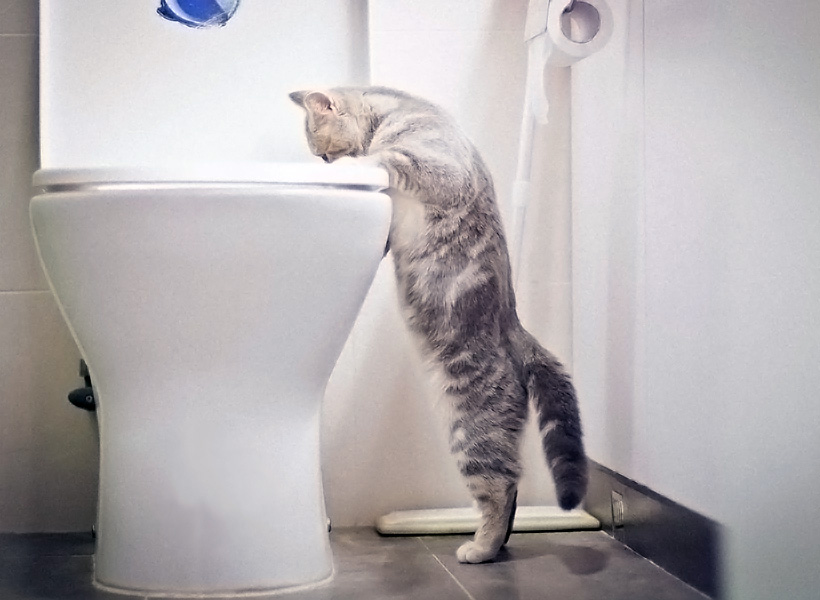Prevent Bathroom Disasters: Don't Flush Cat Poop Down Your Toilet - Expert Guidance
Prevent Bathroom Disasters: Don't Flush Cat Poop Down Your Toilet - Expert Guidance
Blog Article
How do you feel with regards to How to Dispose of Cat Poop and Litter Without Plastic Bags?

Introduction
As cat owners, it's necessary to be mindful of exactly how we dispose of our feline close friends' waste. While it may appear convenient to purge cat poop down the toilet, this practice can have destructive repercussions for both the environment and human health and wellness.
Ecological Impact
Purging cat poop presents dangerous virus and bloodsuckers right into the water supply, positioning a significant risk to aquatic ecosystems. These impurities can negatively influence marine life and concession water quality.
Health Risks
In addition to ecological worries, flushing feline waste can additionally position health and wellness dangers to humans. Feline feces might include Toxoplasma gondii, a bloodsucker that can create toxoplasmosis-- a possibly serious disease, specifically for pregnant females and individuals with damaged immune systems.
Alternatives to Flushing
Fortunately, there are much safer and much more responsible means to throw away cat poop. Take into consideration the following alternatives:
1. Scoop and Dispose in Trash
One of the most common method of dealing with cat poop is to scoop it into a biodegradable bag and throw it in the trash. Make certain to make use of a dedicated trash scoop and deal with the waste promptly.
2. Use Biodegradable Litter
Choose naturally degradable feline trash made from materials such as corn or wheat. These trashes are eco-friendly and can be safely gotten rid of in the garbage.
3. Bury in the Yard
If you have a lawn, take into consideration burying pet cat waste in a marked area away from veggie yards and water sources. Make certain to dig deep enough to avoid contamination of groundwater.
4. Install a Pet Waste Disposal System
Invest in a pet garbage disposal system particularly developed for pet cat waste. These systems utilize enzymes to break down the waste, decreasing smell and environmental impact.
Final thought
Liable animal ownership expands past giving food and shelter-- it likewise includes appropriate waste administration. By avoiding purging feline poop down the bathroom and going with different disposal approaches, we can lessen our ecological footprint and safeguard human health and wellness.
Why Can’t I Flush Cat Poop?
It Spreads a Parasite
Cats are frequently infected with a parasite called toxoplasma gondii. The parasite causes an infection called toxoplasmosis. It is usually harmless to cats. The parasite only uses cat poop as a host for its eggs. Otherwise, the cat’s immune system usually keeps the infection at low enough levels to maintain its own health. But it does not stop the develop of eggs. These eggs are tiny and surprisingly tough. They may survive for a year before they begin to grow. But that’s the problem.
Our wastewater system is not designed to deal with toxoplasmosis eggs. Instead, most eggs will flush from your toilet into sewers and wastewater management plants. After the sewage is treated for many other harmful things in it, it is typically released into local rivers, lakes, or oceans. Here, the toxoplasmosis eggs can find new hosts, including starfish, crabs, otters, and many other wildlife. For many, this is a significant risk to their health. Toxoplasmosis can also end up infecting water sources that are important for agriculture, which means our deer, pigs, and sheep can get infected too.
Is There Risk to Humans?
There can be a risk to human life from flushing cat poop down the toilet. If you do so, the parasites from your cat’s poop can end up in shellfish, game animals, or livestock. If this meat is then served raw or undercooked, the people who eat it can get sick.
In fact, according to the CDC, 40 million people in the United States are infected with toxoplasma gondii. They get it from exposure to infected seafood, or from some kind of cat poop contamination, like drinking from a stream that is contaminated or touching anything that has come into contact with cat poop. That includes just cleaning a cat litter box.
Most people who get infected with these parasites will not develop any symptoms. However, for pregnant women or for those with compromised immune systems, the parasite can cause severe health problems.
How to Handle Cat Poop
The best way to handle cat poop is actually to clean the box more often. The eggs that the parasite sheds will not become active until one to five days after the cat poops. That means that if you clean daily, you’re much less likely to come into direct contact with infectious eggs.
That said, always dispose of cat poop in the garbage and not down the toilet. Wash your hands before and after you clean the litter box, and bring the bag of poop right outside to your garbage bins.
https://trenchlesssolutionsusa.com/why-cant-i-flush-cat-poop/

I came across that review on Can You Flush Cat Poop Down The Toilet? while scouting around the internet. If you appreciated our post please do not forget to pass it around. Many thanks for your time invested reading it.
Explore Now Report this page